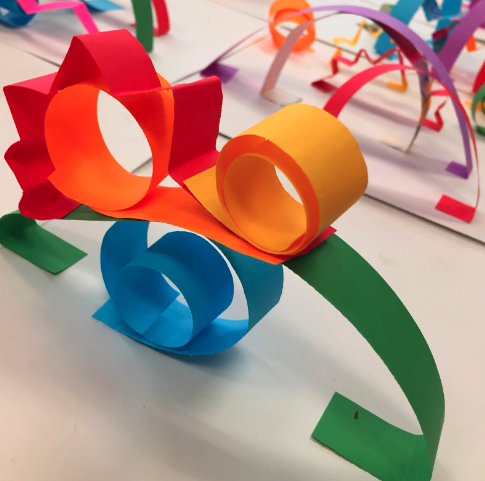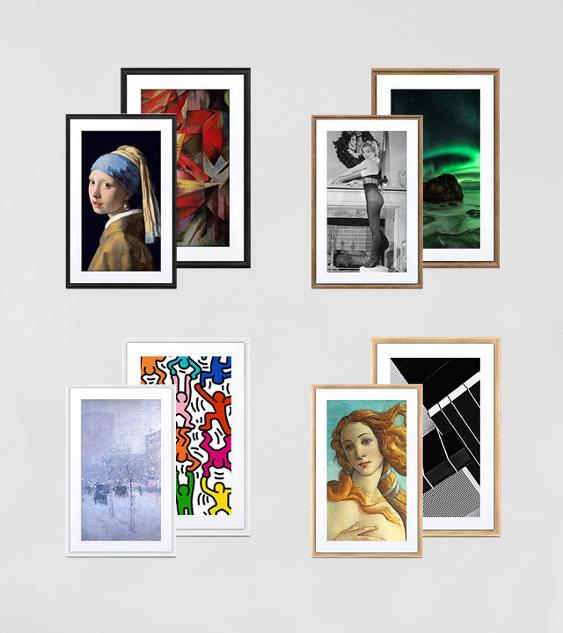Master Your Mediums: A Guide for Oil Painters: PART II of II

This put up is Aspect II, so if you have not still, read Component I 1st! There I examine oil mediums, solvents, and the mediums that I You should not use or advocate.
Solid, Particle-Primarily based “Mediums”

Technically these are additives, not mediums, but checking out their homes potential customers me to the medium I at this time use and propose, so it is useful to explain them below:
Fumed Silica (heat-processed sand)
Fumed silica is an airy, feathery, powder dust created from granite sand. The particles have a huge floor location and low mass, so when it really is mixed with paint or oil it requires on “thixotropic” qualities. This indicates when you blend it or utilize stress it behaves like a delicate flowing liquid, but when you never contact it, it retains its condition like a gel. I’ve applied it by mixing it specifically into my oil paint with a palette knife right on the easel, and alongside with a minor oil, it is a excellent way to extend the paint even though keeping it transparent to make glassy glazes. The appropriate way to mix it is with a muller, but I’ve savored the paste I can get just with the knife. On the other hand, there is an simpler way to use it which I am going to include under.
To recall its homes, hold in intellect: Silica is transparent! It is sand, and that’s what glass is designed of, so use fumed silica for clear glazes.
View my video clip demo for how I add fumed silica to my oil paint here
Chalk (ground calcium)
Chalk dust is the exact things kids for generations have clapped out of blackboard erasers, and it can be just as messy! I’ve applied it by mixing it straight into my paint, and it helps make the paint “chunky”, dry, and effortless to pile up into craggy impastos. I come to feel particular it really is probable the principal component in any accurate “top secret medium of the Aged Masters”. Like fumed silica, you can also blend it extra properly and totally with a muller.
To remember its houses, hold in brain: Chalk is OPAQUE. That’s why we use it to produce on chalkboards! So use chalk in your whites and mild-paint mixtures, to establish up chunky impastos, press 3D shapes ahead into the light, and virtually catch the light-weight with vibrant peaks of texture.
Look at my video clip demo for how I incorporate chalk dust medium to my oil paint in this article
My Chosen Mediums
And now is exactly where we get to the very good component: The mediums I most remarkably advise! It is in fact quite simple: They are just the dry solids I listed above, but conveniently mulled and tubed with linseed oil. Pure Pigments makes these mediums. They are extremely straightforward and cheap, and you could also make them quickly at residence, but Normal Pigments has done the function for me, and I want to just open the tubes and commence portray.
Tubed FUMED SILICA Medium for Glazes:
Oleogel medium by Natural Pigments
I use Oleogel by mixing it into my paint suitable on the palette with my palette knife, and I also use it to oil out my functioning spot of my painting with a makeup wedge (left graphic). Mainly because it has sound particles blended into the linseed oil, it is really much additional secure than making use of linseed oil by yourself, and it helps make a actually stunning transparent glaze. Out of the tube it appears to be like a very clear gel, you can see it in the middle of my palette in the center impression. (Purely natural pigments also will make rapidly-drying version called OleoRESgel, which I believe has alkyd included, so that may possibly be a a wonderful substitution for Liquin or Galkyd. And Natural Pigments lists all their components on their labels and truth sheets.)
Tubed CHALK Mediums for Impastos:
Impasto putty medium by Organic Pigments
Impasto medium by All-natural Pigments
Velazquez medium by Pure Pigments

These are 3 diverse proportions of the identical components: Chalk dust mixed with linseed oil. Impasto Putty has the most chalk, and it’s truly thick, almost like a dry peanut butter, and it forms small peaks when you “elevate off” the palette knife.
Impasto Medium is in the center, the regularity is additional like space-temperature butter, with medium peaks.
Velazquez Medium is my preferred, it really is a bit a lot less chalk and far more oil, and so you get lengthy ropey peaks, and the consistency is a lot more like a stretchy sour cream.
All of them allow you to pile up your paint into thick impastos that look like old-learn paint consequences to me.
These chalk-dependent mediums also permit you to stretch out the paint incredibly thin, so I use it for my lead white under portray layer as very well, wherever I am working with the opacity and transparency of lead white paint to produce a selection of values over the brown uncooked umber underpainting….
View my video clip demo for mixing Oleogel and Impasto Putty into my paint below
Observe my movie demo for how I use Oleogel and Impasto Putty in my present painting
I’ll be sharing far more about developing a guide white beneath portray when I launch my new painting video clip training course later on this calendar year: Glazing and Scumbling a Still Daily life with ROSES. My on-line movie course Glazing and Scumbling is a terrific introduction to the tactics I will be sharing in the additional innovative Roses study course.
Indication up for my mailing list to be notified as before long as the new on line video clip training course is produced!
I instruct Alla Prima, Immediate, and Indirect oil portray in this article on-line, supplied as totally pre-recorded online video programs you can watch any time, like my Intro to Oil Portray which is ideal for newcomers. I also supply mentorship plans if you want enable and aid while working via the classes.
Your Issues about Mediums Answered:
These are a lot more issues individuals requested me about mediums on social media that I couldn’t fit gracefully into the put up:
Do you use distinctive mediums for plein air vs studio operate?
Working en plein air or even alla prima in the studio, I find I am racing from time so I use just a person medium, a easy mixture of 50/50 linseed and odorless mineral spirits.
Do you use distinctive mediums for distinctive grounds or supports, like chalk primed panel, or oil primed linen?
No, but I use unique grounds for various forms of paintings: I use a chalk gesso ground on a clean really hard panel for Oblique portray, and I like RayMar’s oil primed linen panels for my immediate and alla prima paintings. You can see my elements lists with inbound links to my suggested merchandise.
Why do some mediums make the paint remain tacky, and ought to you paint on a tacky layer?
If the earlier paint layer is tacky you are possibly employing way too considerably oil – or maybe other substances that are not drying speedy more than enough. A superior way to gauge if your former paint layer is dry ample to paint around is the “thumbnail check” – If you can make an indentation in your paint movie with a company push of your thumbnail, you must hold out for it to dry additional prior to portray on it.
Can you blend distinctive mediums alongside one another?
As very long as they are easy mediums, possibly sure, but you should be common with each component in your paint. I like to keep transparent mediums and impasto mediums individual, considering that I use them for distinctive needs in distinctive components of the painting.
Are some mediums extra unsafe than many others?
Solvents (paint thinner or mineral spirits or turpentine) are much even worse for your health and fitness than any other ingredient employed for painting, so do all the things you can to limit your exposure to fumes.
Is Galkyd fats or lean?
Rapid-drying or gradual-drying is far extra critical principle than body fat or lean. Alkyd mediums are rapid-drying, so use it only in the most affordable levels of a painting, or for wet-in-wet procedures, as in alla prima or plein air portray.
How do you stay away from sinking in?
I don’t, I just dwell with it! The dim places of a portray surface lighter-value and “matte” as a substitute of shiny and dim mainly because the oil is sucked into past paint levels. The additional layers there are, the even worse the sinking-in gets to be. I do “oil out” the region I approach to paint into that day, but I leave the rest matte. When the portray is performed and dry, I do oil out the total floor after to choose a good photo of the portray, but later on I wipe that oil off with odorless mineral spirits and a makeup sponge.
When the portray has experienced a number of months or months to dry, I varnish it, and then all the rich shiny darkish colors return.





